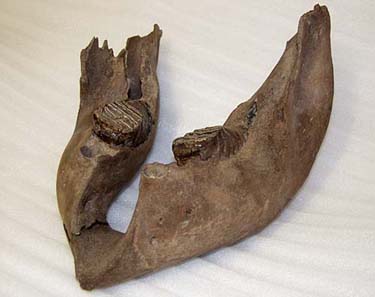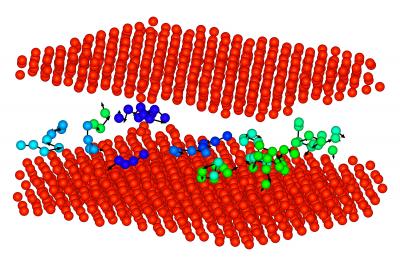Some mammoths remained part of British wildlife long after they were believed (scientifically) to have become extinct, according to research published today in the Geological Journal.
Analysis of both the bones and the surrounding environment in Shropshire, England provide the most geologically recent evidence of woolly mammoths in western Europe, they say.
When a steep decline in the wool trade prompted an 18th century credit crunch, folks in Yorkshire took up a new (and dangerous) business venture - counterfeiting.
In the 18th century, coining was a treasonable offense and therefore punishable by death but in the 1760s and 1770s, a decline in the textile trade motivated hundreds of Yorkshire people from rural communities to risk the gallows by counterfeiting British and Spanish coins.
Living in an area with more fast food outlets and convenience stores than supermarkets and grocers has been associated with obesity in a Canadian study published by BMC Public Health.
Correlation/causation misfire? Sure, unless you want to believe that the government should put up a fresh food stand within a half mile of your house to keep you from becoming obese.
The clothing industry discovered decades ago that a mix of natural and synthetic fibers, like taking cotton and adding polyester, can make clothing that's soft, breathable and wrinkle free.
Now researchers at the University of Washington are using the same principle for biomedical applications. Mixing chitosan, found in the shells of crabs and shrimp, with an industrial polyester creates a promising new material for the tiny tubes that support repair of a severed nerve, and could serve other medical uses. The hybrid fiber combines the biologically favorable qualities of the natural material with the mechanical strength of the synthetic polymer.
If we're lucky, fossils can at least tell us whether an extinct species was carnivore or vegetarian but the skull characteristics of a new species of parrot-beaked dinosaur and its associated gizzard stones indicate that the animal fed on nuts and/or seeds;the first solid evidence of nut-eating in any dinosaur.
Paleontologists discovered the new dinosaur, which they've named Psittacosaurus gobiensis, in the Gobi Desert of Inner Mongolia in 2001, and spent years preparing and studying the specimen. The dinosaur is approximately 110 million years old, dating to the mid-Cretaceous Period.
Stress and strain research got a boost thanks to research from NIST, where scientists have recently found evidence of an important similarity between the behavior of polycrystalline materials, like metals and ceramics, and glasses.
Most metals and ceramics used in manufacturing are polycrystals. The steel in a bridge girder is formed from innumerable tiny metal crystals that grew together in a patchwork as the molten steel cooled and solidified. Each crystal, or “grain,” is highly ordered on the inside, but in the thin boundaries it shares with the grains around it, the molecules are quite disorderly.
 Opioid Addicts Are Less Likely To Use Legal Opioids At The End Of Their Lives
Opioid Addicts Are Less Likely To Use Legal Opioids At The End Of Their Lives More Like Lizards: Claim That T. Rex Was As Smart As Monkeys Refuted
More Like Lizards: Claim That T. Rex Was As Smart As Monkeys Refuted Study: Caloric Restriction In Humans And Aging
Study: Caloric Restriction In Humans And Aging Science Podcast Or Perish?
Science Podcast Or Perish?









